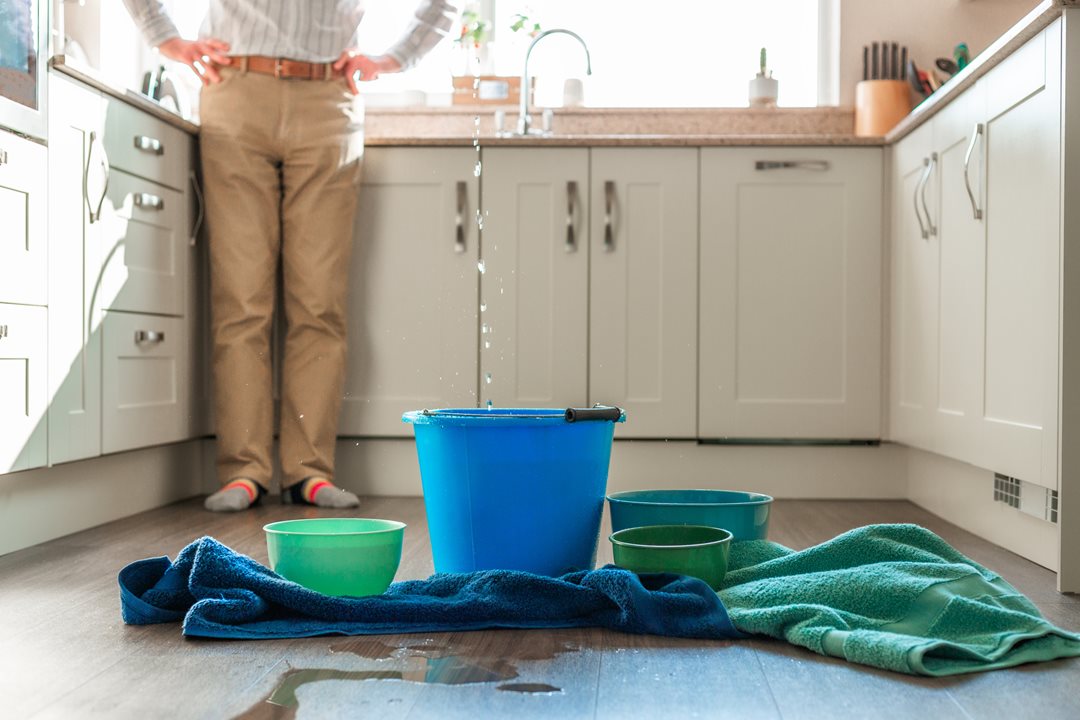Articles
INSPECT: Know the signs of a water leak
September 19, 2024
by PEMCO Insurance

Like many homeowner hassles, water leaks can start with subtle, easy-to-miss warning signs that can escape you until … Surprise! You’re standing ankle-deep in the problem.
That’s why it’s so important to “Inspect to Protect” when it comes to water leaks.
PEMCO’s Maintain, Inspect, and Monitor can help you steer clear of damage that comes with water leaks. Use these six inspection clues to trouble to become your own water leak detective.Signs you may have a water problem
1. Musty or damp smells.
Unpleasant earthy odors may signal that water has found its way to somewhere it doesn’t belong
What *not* to do: Spray air freshener and call it a day.What to do: Try to reduce indoor humidity. It may be as simple as opening interior doors to improve airflow and cracking a window to improve ventilation when the weather (and home security) allows. Run the exhaust fan during showers and for 20 minutes afterward to suck out moisture-laden air. Do the same in your laundry room when washing in warm or hot water. And always run the range-hood fan in the kitchen when boiling or frying to pull steam out of the room.
Other odor-inducing culprits can include failed grout and caulking that’s allowing water to seep into walls around the shower or even moisture-trapping carpet laid over concrete floors.
2. Water stains on ceilings or walls.
They could show water intrusion from a leaky pipe or roof, failed siding, or even wayward water from a neighboring condo unit.What *not* to do: Paint over the problem – out of sight, out of mind!
What to do: Seek the cause, which may require a call to a plumber, your building manager, or even a water mitigation specialist who can use tools like a moisture meter to pinpoint where the water may be coming from (and how far it has spread).
3. Running toilets.
Sometimes, toilets can run (which means water is continuously flowing into the tank) even if you can’t hear anything.What *not* to do: Work on perfecting your handle-jiggling technique.
What to do: Try this simple hack that requires some food coloring and paper towels. (It also explains how to stop a run if you have one.)
4. Damp attics and crawlspaces, cracked foundations.
Before houses were built “tight” for energy efficiency, slightly drafty attics and crawlspaces often gave moisture a path to escape. Now, they can be part of the problem.What *not* to do: Ignore them. Attics and crawlspaces are creepy, anyway.
What to do: Make sure fallen insulation isn’t blocking foundation and attic vents. Verify that exhaust fans truly vent outside, rather than into the attic, crawlspace, or garage. Seal cracks and gaps in the foundation that could let in water (DIY with caulk or epoxy if minor; hire a contractor if not), verify your crawlspace’s vapor barrier is intact, and check that landscaping and downspouts drain away from your house.
5. Low water pressure.
If your shower isn’t showering like it used to, make sure the water isn’t escaping before it gets to you.What *not* to do: Learn to love half-rinsed hair.
What to do: Rule out problems like a cracked water line. That could show up as a soggy spot in the yard and requires quick, professional attention. Other possibilities include buildup inside pipes or (much less serious) clogged faucet aerators or shower heads.
6. High water bills.
Unless you’ve been filling a hot tub or watering a new patch of lawn, your seasonal water usage shouldn’t vary much from year to year. Hidden leaks, perhaps from a cracked sprinkler head or corroded water heater, can drive up usage.What *not* to do: Grit your teeth and just pay the bill.
What to do: Head out to the water meter box (often at the edge of your property near the street) and look for the flow indicator on the dial. Configurations vary, but you may see a small triangle. If it’s spinning even though you know you don’t have any water intentionally running in the house, you may have a leak. If the triangle isn't moving, but you still suspect a leak, write down the meter reading then make sure nobody in the house uses any water for two hours. Check the meter again. If it's gone up, you may have a leak.
Quick note: this tip isn’t foolproof. A leak could still be present even if you don’t notice your dial spinning.
Ready to take the next worry less, live more steps to help keep your home leak-free? Check out our tips to Maintain and Monitor the water systems in your home.
Share on social media